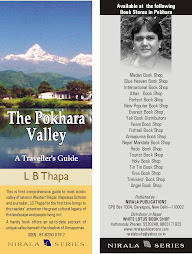LB THAPA
Nepal began producing tea 146 years ago through Gajraj Singh Thapa, a relative of Jung Bahadur Rana. Rana had received tea saplings from China, and Thapa planted them in 1863 and 1865 in Ilam and Soktim.

After that, no major steps were taken to promote tea farming in Nepal until 1966 when Nepal Tea Development (NTD) was established. Today there are seven tea gardens and two factories in Jhapa alone.
During the British rule in India, tea plantations began in the hills of Darjeeling, and soon it was commercialized. The tea was good, and soon it captured the international market. The success story of Darjeeling Tea definitely encouraged Nepali farmers to grow their own in the sloppy hills of the eastern Himalaya.
In the last two decades, Nepali tea has been doing exceptionally good. Private investment has soared up in the industry. Farmers in the east and some parts of the Tarai have found tea farming to be a more secured livelihood than growing cereal crops.
Tea plantation is a more assured source of living because its demand is greater with every passing year. Unlike seasonal crops, tea plants don’t require to be planted every year. Once planted and taken proper care of, it can be harvested for several years.
Tea can also be a nice family business. Tea estates have created job opportunities, and tea has become an export item, earning foreign currency and enriching the national coffers. Tea gardens also enhance the natural ambience of the surrounding areas.
Tea estates spread on cascading slopes look beautiful and prevent soil erosion. This definitely attracts tourists to visit tea “gardens”. So, tea and tourism can be a wonderful draw for the hospitality industry of Nepal.
Ilam has natural beauty. But in recent times, tea farming has made the district even more popular. Lately, more farmers have turned to tea farming across Ilam.
“If things go right, we can earn upto Rs. 20,000 annually from tea production on one ropani of land” said Hira Dangol, a resident of Panchakanya Village. Therefore, several farmers have opted for tea planting instead of traditional agriculture. By 2003, over 10,000 hectares of land was brought under tea cultivation, and it is growing steadily.
Annually, the production and growth of Nepali tea has been registered at 10 to 15%. This is because tea connoisseurs worldwide have found Nepali tea young, fresh and more aromatic. In 1998-99, Nepal earned Rs. 300 million by exporting its tea.
Over 70,000 people are employed in the tea estate and the factories. Tea entrepreneurs think that Nepali tea must be advertised abroad more professionally to capture more market. The Nepal Tea Association (NTA) and the government must work together to popularize Nepali tea in the international market.
Nepal presently grows two kinds of tea: Orthodox, and CTC. Orthodox tea is grown in six hill plantations of Ilam. Other eastern tea-producing districts are Panchthar, Dhankuta, Tehrathum, and Sindhupalchok. Kaski is another district further west.
CTC tea is produced in Jhapa. About 90% of it is consumed in the domestic market. The National Tea and Coffee Development Board (NTCDB) has made efforts to promote Nepali tea. There are, however, still many problems that Nepali tea farmers face.
While more land must be brought under tea farming, many new farmers are unable to begin due to lack of funds. Special policy should, therefore, be introduced so that more investment can be made in the Nepali tea sector.
In addition, the present inadequate infrastructure, excessive use of chemicals, low-skilled labor, and a lack of well-planned strategy to improve the production process and marketing of the finished goods are top priorities to be addressed. Training centers for farmers is also urgent in the tea sector.
Transportation is another priority for Nepali tea to reach the nearest seaport or airport. Many farmers still carry tea on their backs to the nearest exit points. So, tea farms must be connected with the nearby towns so that quick delivery of the produce is ensured while it is fresh.
Nepali tea producers must also enjoy comparative subsidies or incentives in the region. Competitive micro and macro financial institutions must promote tea farmers. In addition, Nepal needs its own tea research centers.
Nepal’s tea plants are among the youngest in South Asia. Therefore, its natural and tender freshness and organic aromas are bound to be top sellers in the world market.
These are a few among the prime pointers to be considered by Nepal’s private-public partnership initiatives to promote the exotic Nepal Himalayan brew internationally.
( Credit: This article was originally published in MY REPUBLICA)









No comments:
Post a Comment